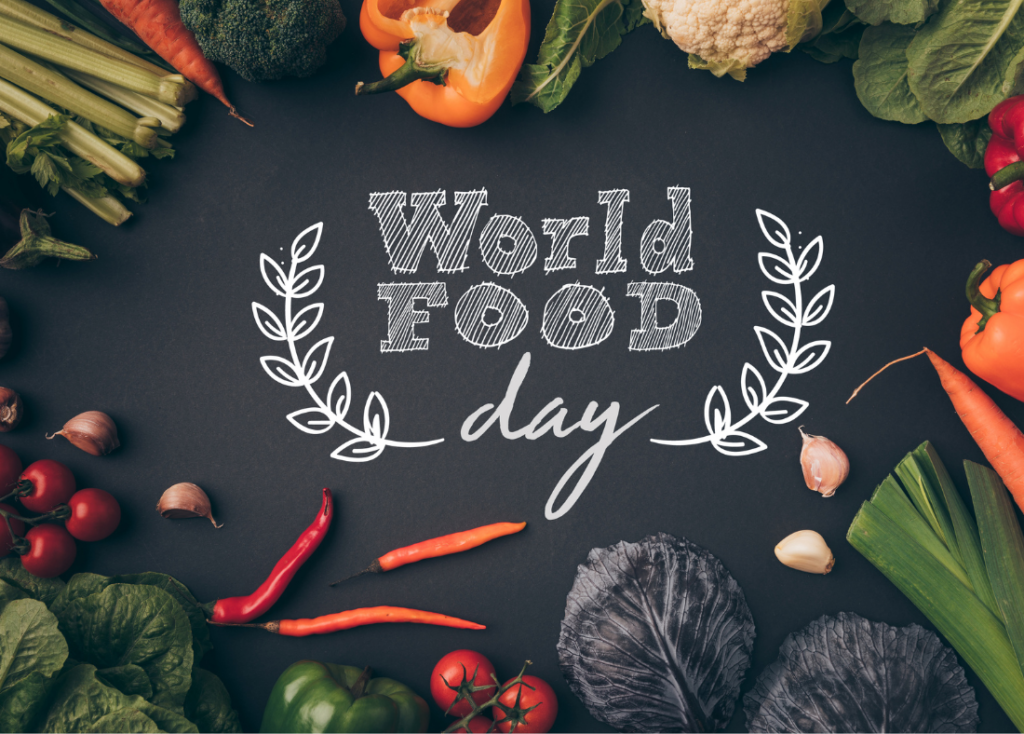Marilyn Bruno, Climate Writer

We all love food and eat it every day! Why should one day a year in October—harvest time in the northern hemisphere—be designated World Food Day? In 1979, the United Nation’s branch, the Food and Agricultural Organization (FAO), designated October 16th as World Food Day to raise international awareness of two main things: world hunger and food insecurity.
Hunger: World hunger is appalling—with almost 40% of the global population unable to afford a healthy diet.
Food insecurity: Every country of the world has among its main priorities to provide enough food for every citizen. Many countries are failing badly to produce enough food, particularly with the growing severity and duration of droughts and pests destroying soils, crops and the livelihoods of farmers. Today, droughts are lasting years, which is redefining them as “aridification.” Countries that cannot produce enough food to feed their people rely on treaties, free trade agreements and other mechanisms to lock in supplies. As seen in the collapse of the export levels of grain from Ukraine, people are starving in Africa.
The United States is blessed with one of the most expansive areas of arable, productive land on the planet. We export more food than any other country in the world. The most popular exports from the United States are maize, soybeans, and milk. Other common exports include wheat, sugar beet, sugar cane, potatoes, and chicken. Among the top export destinations of U.S. “cash crops” are Canada, Mexico, China, Japan and Germany. But we also export food for political obligation, political influence, and humanitarian assistance.
The U.S. even donates food among its “humanitarian aid” to the Democratic People’s Republic of Korea, despite decades-old sanctions and recent sanctions that were levied to protest recent nuclear aggression. When I worked at the State Department (1992-2008), I was tasked with overseeing the U.S. global food assistance programs, including North Korea. Among my work was finding ways to assess the use of the food received by the North Korean government – e.g. whether it went to civilians or was diverted to feed the army. Being denied on-site monitoring, it was not possible to discern the use of all the food. The little data available was alarming. Of the 15 million people, only 9.35% of the population was over 65 years old (higher than the long-term average of 5%, but lower compared with the U.S. or South Korea., where Seniors numbered 16% if the population in 2021). The low Senior population in North Korea is not reflective of a baby boom, but because older citizens give their food to their children and grandchildren to keep them alive. Today, in the face of mass starvation, this same scenario is being seen in drought-afflicted African countries.
Food safety: Although not in the initial mandate of the World Food Day, food safety is a main concern of the FAO and every country of the world. In the U.S., inspectors from the Department of Agriculture’s Food Safety and Inspection Service (FSIS) are tasked with testing domestic and imported food. The very recent incidents of food contamination is growing (e.g. recall of cheese contaminated with Listeria. The FSIS website posts food safety alerts in real time. Keep this website handy, as global warming and the increase in bacterial and fungal resistance leads to an increase in biofilm and contamination.
What else can be done?
For World Food Day 2022, we can all celebrate our bounty in America. We can plan an online or in-person and utilize the various promotional materials provided by FAO.
We can register for and tune in to the global discussion around food insecurity and its link with climate change.And, since we are all part of the global community and love our planet, we can do what we can to support reliable and sustainable food systems such as composting, diversifying our diets, avoiding waste, supporting local food producers, dressing and eating sustainably and donating generously to local and international food drives.
